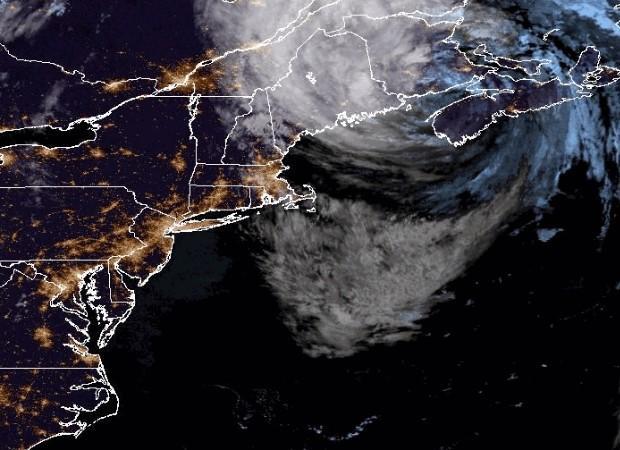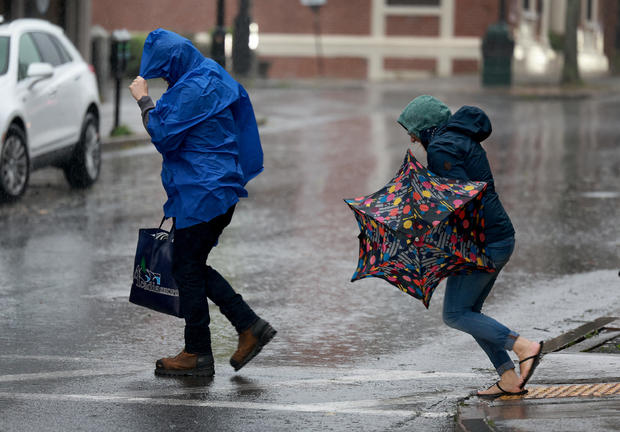Lee made landfall with near-hurricane strength in the Canadian province of Nova Scotia on Saturday as a post-tropical cyclone, the National Hurricane Center said. The storm crashed ashore with maximum sustained winds of 70 mph, just below the 74 mph threshold for a Category 1 hurricane, according to the agency.
The onetime hurricane moved up the Atlantic Ocean this week, threatening the East Coast with life-threatening surf and rip currents. On Saturday, Lee was lashing parts of New England and southeastern Canada with heavy rain and powerful winds and causing dangerous storm surge.
By late Saturday night, a tropical storm warning for Maine had been canceled, the hurricane center said. However, tropical storm warnings remained in place for portions of the Canadian provinces of New Brunswick, Nova Scotia and Prince Edward Island, along the Magdalen Islands.
In the coastal town of Searsport, Maine, a 51-year-old man died Saturday after a large tree limb fell on his vehicle, according to the Associated Press. The incident happened as high winds were hitting the area. Police Chief Brian Lunt said the electricity had to be cut to downed power lines before the man could be taken from the vehicle, according to the AP.
Nearly 200,000 customers lost power in Nova Scotia. More than 53,000 customers were without electricity in Maine as of late Saturday night, according to utility tracker PowerOutage.us.

Getty Images
Lee made landfall in far western Nova Scotia at around 4 p.m. EDT, the hurricane center said. As of 11 p.m. EDT, Lee had maximum sustained winds near 60 mph, and it was forecast to weaken in the coming days. The storm’s center was located about 80 miles northeast of Eastport, Maine, and about 105 miles northwest of Halifax, Nova Scotia, the hurricane center said. Lee was moving north at 14 mph.
Tropical-storm-force winds were extending up to 290 miles from the center of the storm, according to the hurricane center.

NOAA/NESDIS
In Massachusetts, Lee pounded coastal areas with gusts as high as 63 mph, CBS News Boston reported. Dozens of flights were canceled in the state, according to FlightAware.
President Biden approved a federal emergency declaration for the state on Saturday, authorizing the Federal Emergency Management Agency to coordinate any relief efforts. Mr. Biden approved a similar declaration for Maine on Thursday.
Massachusetts Gov. Maura Healey, who had declared various states of emergency for the storm, lifted the orders Saturday, saying on social media Lee’s effects on the state were “minimal.”
“I’m grateful for residents and public safety officials who have been responding to and preparing for severe weather and flooding throughout the week,” she said.
In the coastal Massachusetts town of Cohasset, south of Boston, a tree came crashing down on a police cruiser, but the officer inside was not seriously hurt, officials said.
Ahead of the storm, lobstermen moved their boats and traps inland so they wouldn’t be damaged in rough waters.
“It’s the saying that I always say, if you don’t do anything, it’s going to be bad,” Jeffrey Richardson of Sandwich, Massachusetts, told CBS News Boston. “If you spend half the day hauling traps, bringing traps in, prepping your boat, it’s going to be minimal. And that’s what happened … much better being safe than sorry.”
- In:
- Hurricane Lee
- Canada
Alex Sundby
Alex Sundby is a senior editor for CBSNews.com
